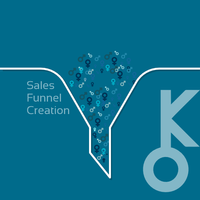Evolving Sales Funnel Designs and Strategies
Sales funnels are the backbone of any successful marketing campaign. They provide a systematic approach to guide potential customers through the buying process, ultimately leading to sales conversions. As technology continues to advance and consumer behavior evolves, sales funnel designs and strategies must also adapt to remain effective.
In this comprehensive overview, we will explore how sales funnels have evolved over time and discuss emerging trends and strategies that shape their future. We will delve into various aspects such as customer journey mapping, personalization, automation, omnichannel integration, analytics-driven optimization, and mobile-first approaches.
I. Customer Journey Mapping
To create an effective sales funnel, it is crucial to understand the customer's journey from awareness to purchase decision. By mapping out each stage in detail - including pre-awareness, awareness, consideration, decision-making - marketers gain valuable insights into their customers' needs and preferences at each point along the way. This enables more targeted messaging and ensures a seamless transition between stages for higher conversion rates.
II. Personalization
One-size-fits-all sales funnels are becoming less effective in today's highly competitive marketplace. Personalization allows businesses to tailor their messaging and offers based on individual customer preferences and behaviors. Advanced data analysis techniques enable segmentation of target audiences resulting in dynamic content delivery for a more personalized experience throughout the entire funnel.
III. Automation
Automation has revolutionized sales funnel management by streamlining repetitive tasks while maintaining consistency across multiple touchpoints. Automated email campaigns triggered by specific actions or milestones within the funnel increase engagement levels with prospects as well as nurture relationships with existing customers.
IV. Omnichannel Integration
With consumers interacting across multiple channels such as websites, social media platforms, mobile apps or physical stores; integrating different touchpoints into a seamless experience becomes paramount for successful funnel design.Incorporating omnichannel strategies ensures that customers can transition effortlessly between online and offline touchpoints, providing consistency throughout their journey.
V. Analytics-driven Optimization
Data analytics plays a crucial role in enhancing sales funnel performance. By analyzing metrics such as conversion rates, click-through rates, and bounce rates across each stage of the funnel, marketers gain actionable insights on areas for improvement. Continuous optimization based on data-driven decisions enhances the overall effectiveness of the funnel design.
VI. Mobile-first Approaches
With the increasing dominance of mobile devices in consumer behavior, it is essential to prioritize mobile experiences within sales funnels. Responsiveness and ease-of-use on smartphones and tablets are critical factors for successful engagement and conversions. A mobile-first approach ensures that funnels are optimized for smaller screens while maintaining high usability standards.
In conclusion, the future of sales funnels lies in their evolution to meet changing customer expectations and technological advancements. The incorporation of customer journey mapping, personalization, automation, omnichannel integration, analytics-driven optimization, and mobile-first approaches paves the way for more effective marketing campaigns leading to higher lead conversion rates and ultimately increased revenue for businesses. By staying ahead of these trends and adapting strategies accordingly with constant monitoring and refinement; organizations can ensure they have an edge in an ever-evolving marketplace.
















